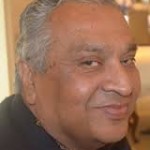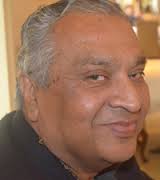By: RMS Liberhan, Director, India Habitat Centre
 Track2Realty Exclusive: No institution is born into greatness; they have to ascend their way into greatness. The only real lasting lesson of institution building is that values create value. If you do not have values, no amount of advertising billboards can get you an enduring image of excellence. There can be glory in the short run perhaps, but a lasting reputation can be built only on integrity of purpose and ethics and an indomitable will to never compromise on standards.
Track2Realty Exclusive: No institution is born into greatness; they have to ascend their way into greatness. The only real lasting lesson of institution building is that values create value. If you do not have values, no amount of advertising billboards can get you an enduring image of excellence. There can be glory in the short run perhaps, but a lasting reputation can be built only on integrity of purpose and ethics and an indomitable will to never compromise on standards.
India Habitat Centre was fortunate to have been founded with a philosophy. It had given itself a mission and by a remarkable chance, it was situated into an advantageous location. Added to these foundational assets, the architectural design was authored by a person of rare imaginative talent whose phenomenal instinct for space and time interplay helped create cordial environs, inviting, yet without intimidation. The entire ambience is fetching and gives the visitor a chance to reflect in solitude amongst people.
The Centre has been a unique concept in urban living. It is a complex which is live all 24 hours. There are working spaces, leisure venues, dining areas and of course the guest house. The art galleries and library & resource centre provided the creative and intellectual spaces. This urban design has in a very subtle way facilitated the compatibility of the varied usages and has given the Centre vibrancy without ostentation.
During the course of the evolution of the profile of the Centre, there was a constant engagement with the context of the Centre’s philosophy and its different constituencies so as to create a menu of choices which originated in the best traditions of the performing and fine arts, build platforms for conversations on issues of contemporary concern to the citizenship, avoid the popular genres but still not make the leisure time overloaded with classic texts.
The temptation to make promises was resisted; rather the focus was on doing things and innovating on the offerings in all our endeavors. There was also a high degree of openness to receiving ideas and suggestions and these were evaluated and woven into the profile of the Centre depending on their worth. We constantly eschewed ceremony, casting our faith in content rather than form.
Even the very first program in the Centre went on stage without any ribbon-cutting or formal speeches. This compelled us to keep our ears and eyes open to absorb instinctively what was going down well and what was not particularly preferred. The ‘dressing’ has never been a part the Centre’s personality. It is the rhythm of its programs and the cordiality of its ambience that has given the Centre its attraction.
The hardest part in institution building is to fight perceptions. The Centre has not been an exception, either. You acquire tags and labels in your quest and no matter what intention drives your endeavors, unintended perceptions get created. It is an ‘elitist’ institution, it is very ‘commercial’, it is not like a ‘club’, etc, etc. How to fight a perception? Can a publicity blitz help, making a sustained pitch to all that we are none of these.
How do you define your identity in a social context and state your value system? Agreed, that perceptions are hardest to change. The only way for us has been to stay the course, believe that the mission of the Centre can only be conveyed by example and not through arguments, only through proving over and over again in the activities that what we profess is what we do. What people see, they can relate much more easily than what they read or hear.
The question of finding an identity is a long travail. This does not happen in a hurry. Nor can it be transplanted from available profiles. Nothing sits as awkwardly as an acquired identity and more than anything else, the entire effort goes into moderating performance to align with the acquired identity.
The Centre started practically on a clean canvas, thus giving a chance to write its own story as it went along. It had a structural advantage in that its governance did not require it to pay any dividends to the promoter funders. Its one line mandate was to actualize its philosophical tenets of building platforms for the intellectual and social capital to engage in a discourse of relevance to societal preoccupations. It was also to ensure that the architectural integrity of the Centre was not compromised, either in its usage or in its aesthetics.
In this regard, we began by ensuring that the access to the events was democratic without reference to any biases, that the composition of the membership profile of the Centre must reflect the society we are a part of and that there will not be any preferences for any categories at all. The one pivot that the Centre consciously created was to make the visitor experience the environment and enrich their memory with it.
It is this ‘experience’ that has shaped the Centre’s identity over the years and when it can be gone through any number of times, the perception gets settled. This was education in the making, getting hints and messages as one went along in time. We were fortunate enough to have the capacity to listen to these messages and take the hints. There indeed were times when we were anxious to prove what we stood for, but you learn patience sometimes the hard way.
The listening art is the most valuable asset. In organizations, hierarchies intrinsically limit the voices that can reach the decision making levels. The Centre’s organizational structure has every level being responsive giving them a part in the play. They do not need to get ‘instructions’. Hence ‘listening’ has been easy.
The enduring lesson in institution building is that the architecture defines its presence; it is its philosophy that gives it its vibrancy. We often make the mistake that individuals are bigger than the institution. We need to remember that institutions live on and beyond individuals, so the name and fame must be of the institution and what it stands for.
The Centre’s management has been generally anonymous but proactive and sensitive to the kind of path it seeks to tread. There are many externalities that influence the growth of an institution but these have to be a part of the moderation needed to adjust to the context of the society in which it is placed. It is this partnership which gives the Centre’s persona a distinctive resonance.





